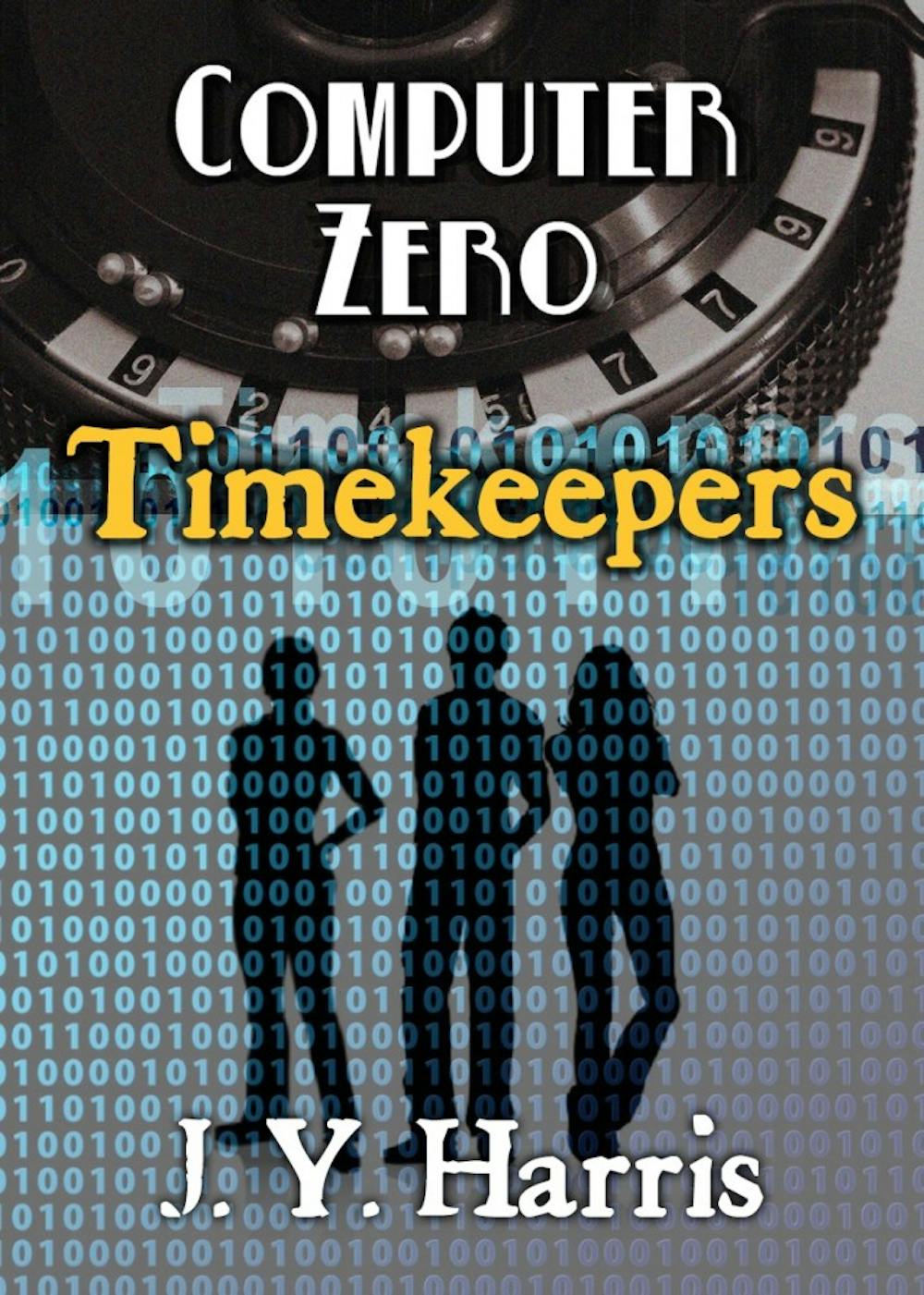Situated on a shadowy corner of South 33rd Street, the entrance to the Moore School of Electrical Engineering is semi–concealed and unassuming. The gray door frames and slightly rusty handles lead into a quiet, slightly off–kilter hallway—stairs on the left, glass–windowed lounge on the right, and a gradually more expansive path forward. Penn students might associate the building with their 9:00 a.m. CIS recitation or the digital media design lab. However, a recent novel—Timekeepers: Computer Zero by J.Y. Harris—casts it in a more revealing light: as the building where the world’s first programmable computer, the ENIAC, was constructed and operated.
In the novel, time–traveling siblings Kristen and Brad Everheart, who are on a visit to Penn’s campus with their cousin Sally, are suddenly catapulted back in time to 1943—the year Penn professors John Mauchly and J. Presper Eckert designed the ENIAC, a Turing–complete computer that solved problems a thousand times faster than electromechanical machines. During their painstaking quest to identify “when” they are and return to the present, the three protagonists find themselves tasked with potentially altering the course of history through an unexpected run–in with enemies of World War II.
In addition to the Moore Building, the characters journey through a myriad of familiar campus locations: Franklin Field, Locust Walk, the Fisher Fine Arts Library, and more. Penn history gurus might also recognize scenes from a 1940s “Rowbottom” riot—a chaotic Penn tradition of civil disorder that involved window–smashing, overturned vehicles, and mischief–making calls of “Hey Rowbottom!” Readers will get to see places they walk through on a daily basis through the eyes of two fictional children in a completely different era.
Ms. Harris, who is a native of upstate New York, got the idea for Timekeepers: Computer Zero from the thought that today’s modern technology—from smartphones to GPS to social media—would never have existed without old–school computer technology. “So,” the novel’s Kindle summary reads, “what if the computer hadn’t been invented? Or was invented… somewhere else? By someone else?” The series of happenings at Penn in 1943, the novel proposes, may have drastically altered the way millions of people around the world now use technology every day.
Ultimately, Ms. Harris hopes readers of the Timekeepers series will be encouraged to treasure the history that has occurred and is occurring all around them. “We tend to take everything that happens in our own backyards for granted,” she says. “But if we look twice at our surroundings through fresh eyes, we might find that something incredible has happened where we live.” For Penn students, knowing that Insomnia Cookies and Urban Outfitters were started by the university’s own alumni expands our views on what students like us are capable of. Learning about the medical advancements developed on campus, such as the Rubella and Hepatitis B vaccines, supplies abstract concepts like “research” and “innovation” with tangible meaning.
Today, four of the forty original panels of the ENIAC are still on display on the ground floor of the Moore School Building. Harris’s novel takes readers through a precarious but fulfilling trip in time that will leave them walking through campus with a completely different perspective.
Timekeepers: Computer Zero is available in both eBook form and paperback. Check out its Amazon page to learn more and catch a sneak peek inside.







